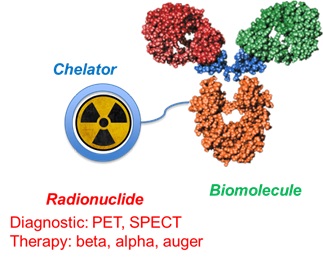Valery Radchenko Colloquium
Fri. Feb. 9 12:30 PM
- Fri. Feb. 9 01:20 PM
Location: 3M69
TRIUMF Speaker Tour.
Valery Radchenko, Research Scientist
Production and Application of Radionuclides for Radiopharmaceutical Science
The use of radionuclides has become more and more common in the diagnosis and therapy of cancer. Targeted radionuclide diagnostics and therapy based on the combination of appropriate radionuclides with selective delivery systems (e.g. antibody, peptides etc.) maximizes precision of the imaging as well as minimizes the damage of healthy tissues during therapy. Several imaging modalities using radionuclides including Single Photon Emission Tomography (SPECT) and Positron Emission Tomography (PET) can be applied for non-invasive cancer visualization. Furthermore, based on imaging (tumor sizes and locations), appropriate therapeutic radionuclides emitting alpha, beta- particles or auger electrons can be utilized. This combination of radionuclides for diagnostics (imaging) and therapy by using the same delivery systems, named theranostic, has become state of the art in nuclear medicine. To broaden the number of radionuclides that can be applied in combination with organic delivery systems, appropriate bifunctional chelator systems should be in place to effectively attach some of the radionuclides (e.g. radiometals) to biomolecules.
Two main sources are utilized for the production of medical radionuclides including production with protons (cyclotrons) and neutrons (reactors). Another promising production route for medical radionuclides is by using linear electron accelerators. Alternatively, radionuclide generator systems can be utilized as effective cyclotron/reactor-independent sources of medical radionuclides, where the parent radionuclide is produced by a cyclotron or reactor and then serves as a source of a shorter-lived daughter radionuclide which can be utilized for nuclear medicine purposes. After production, in most cases, medical radionuclides need to be isolated from the target material and preconditioned for further radiopharmaceutical application.
All the above-mentioned aspects will be discussed in the colloquium as well as future trends and progress with relation to TRIUMF projects.

